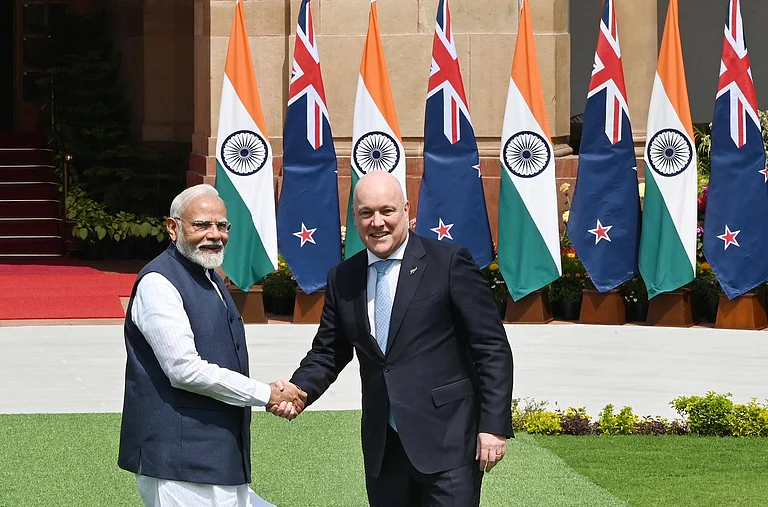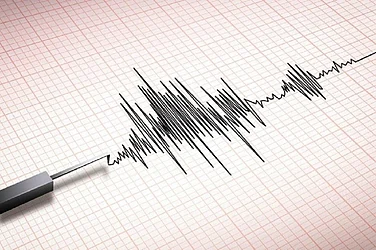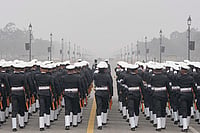Qatar on Thursday said that a four-day Israel-Hamas ceasefire would start on Friday morning and the first batch of Israeli hostages would be released later in the day.
As per the terms of the deal, the ramped-up delivery of humanitarian assistance to the Gaza Strip would also commence at the earliest, said Qatar, which has been facilitating indirect talks between Israel and Hamas along with the United States.
In the Israel-Hamas hostage deal, around 150 Palestinians undergoing detention and sentences in Israel would be released in lieu of 50 Israeli women and children abducted by Hamas on October 7 and taken to the Gaza Strip as hostages. Upon the completion of the four days of ceasefire, an additional 10 hostages would be released in exchange for 30 Palestinians for every one day's extension of the temporary truce.
The Israeli government has confirmed it has received a list of 13 hostages to be released on Friday and their families have been notified, reported The Times of Israel.
On October 7, Hamas and allied Palestinian groups mounted the biggest-ever attack on Israel in which the Israeli authorities say around 1,200 were killed, 6,900 were injured, and at least 240 were abducted and taken to Gaza as hostages. Of the hostages, some have been confirmed to be dead, such as Shani Louk, whose video of being paraded in Gaza in the back of a truck in a semi-naked state amid celebratory cheering was widely circulated at the time.
What do we know of the Israel-Hamas deal?
Qatar's Foreign Ministry Spokesperson Majed al-Ansari on Thursday said that the Israel-Hamas ceasefire would start at 7 am on Friday morning.
Al-Ansari added that the first batch of Israeli hostages taken by Hamas would be released around 4 pm. They would include 13 women and children.
Upon receiving proof that the hostages released are the Israeli citizens specifically agreed upon, Israel will release its pre-designated group of Palestinian prisoners, according to The Times of Israel.
Al-Ansari further said the humanitarian aid would start "going in as soon as possible" after the ceasefire comes into effect.
While humanitarian aid has been entering Gaza for weeks, it has been a trickle compared to what the United Nations (UN) agencies have envisioned. Under the terms of the Israel-Hamas deal, 200 trucks carrying relief supplies and four trucks carrying fuel would enter Gaza every day.
Notably, the announcement of the release of the hostages and the ceasefire comes a day after the date initially expected. The delay has been attributed to numerous factors, with The Wall Street Journal citing Egyptian officials —who have been engaged in the talks since the Hamas attack— as saying that the failure of Hamas to provide a full list of hostages to be released and its failure to sign off on the deal were the cause of the delay. There were also discussions for Hamas granting Red Cross access to the remaining hostages and it is not known if the final deal includes this.
Notably, it has been reported that Hamas is not aware of the exact locations of all the hostages as multiple cells of Hamas and some allied groups, like the Palestinian Islamic Jihad (PIJ), were also involved in the October 7 attack.
What's the way forward?
The Israel-Hamas hostage deal is the biggest diplomatic breakthrough since the outbreak of the war.
There are hopes on both sides that the ceasefire would go beyond four days and more hostages with Hamas and Palestinian prisoners in Israel would be released.
Much, however, depends on how Israel and Hamas conduct themselves during the four-day ceasefire. While Israel has said it would honour the ceasefire, it has also said that it would retaliate if Hamas violates the ceasefire. Moreover, Lebanon-based Hezbollah, which has opened a second front against Israel in the country's north, is also party to the conflict and it remains to be seen if the northern front would remain quiet.
While the international community hopes that the ceasefire and the exchange of hostages and prisoners will lead to more talks, no one knows for sure how the situation might evolve. Israel remains committed to hunting down the leaders of Hamas, including its Gaza-based leader Yahya Sinwar, who has been considered as a key architect of the October 7 attack. There are also hopes that humanitarian crises in Gaza, where estimates suggest up to a third of all houses have been destroyed or damaged, would also be addressed better with the ceasefire.
Following the October 7 attack of Hamas, Israel declared war on Gaza. It mounted an aerial bombardment and began a ground operation as well late last month. While Hamas leaders and facilities are the stated targets, widespread civilian casualties have also taken place and large swathes of Gazan neighbourhoods have been flattened in the month-long bombing campaign. Gazan authorities say more than 13,000 Palestinians have been killed, most of them being women and children. Around 1.5 million Palestinians have been displaced internally and are facing dire humanitarian crises as the Palestinian enclave, one half of the envisioned State of Palestine along with the West Bank, lacks sufficient reserves of food, fuel, medicines, and other essentials.


























